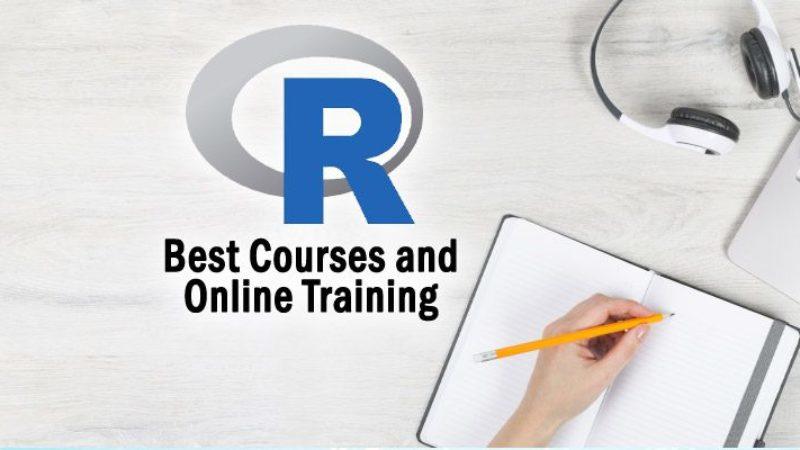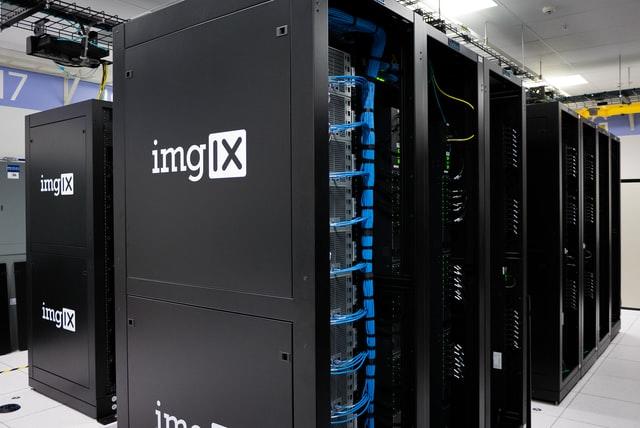R, a programming language, is very well-liked. There is no denying the popularity of R, whether you consider its 10,000 packages or the fact that it is the sixth most used programming language. The use of R increases along with fields like data science and machine learning.
The S programming language, developed by John Chambers at Bell Labs, is a forerunner of the R programming language.
R was developed at the University of Auckland in New Zealand by Robert Gentleman and Ross Ihaka. To create R, the team coupled the S programming language with lexical scoping semantics. The R project was initially proposed in 1992 and first made public in 1995. The stable beta version was released on February 29, 2000.
R is an environment and programming language for statistical computing and graphics. R offers various graphical and statistical tools, including linear and nonlinear modeling, traditional statistical tests, clustering, time-series analysis, and classification. Additionally, it is quite expandable.

R Programming Certification Courses
There are many R programming certifications available online. But there are a few good quality courses that are available for free. Check out the best R programming certification courses, classes, tutorials, and online training. This list includes free and paid courses that beginner and expert-level learners can take. These are applicable for learning Data Science and Machine Learning and equally useful for anybody learning R programming in graphical and statistical fields.

R Programming Course A-Z™: R For Data Science With Real Exercises (Udemy)
This is one of the best R programming tutorials that help you master programming in R and R studio with live examples. You will learn data analytics, data science, statistical analysis, packages, functions, and GGPlot2.
The course begins by teaching R programming basics and combining programming and statistical concepts. Then the course progresses to advanced topics like matrices and data frames. All the course material is intertwined with ample theory and real-life examples to support learning.
Data Science and Machine Learning Bootcamp with R (Udemy)
In this R language course, you will learn to program with R, use R for data analysis, create amazing data visualizations, and use Machine Learning with R. The program is suitable for experienced professionals who want to change their career track to data science and beginners who wish to learn data science and machine learning from the ground up.
This is a comprehensive R course with over 100 HD video lectures, detailed code notebooks for every lecture, eight articles, and three downloadable resources. It takes you through environment setup and the basics of programming in R, along with vectors, matrices, and data frames. Then it covers data visualizations in R leading to the data Capstone project. Further, the course delves into machine learning with a dozen portfolio projects. You get a certificate of completion on finishing the course.
R Programming Certification from Johns Hopkins University (Coursera)
This course aims to teach R as a programming language and how to use R for effective data analysis. It covers practical R programming issues, reading data into R, accessing R packages, writing R functions, debugging, profiling R code, and organizing and commenting on R code.
This Certification in R programming starts with basic building blocks of R like datatypes, functions to read and write data, etc. Then it proceeds to formulate how to write R programs using control structures, R functions, and basic operations on data. You will also learn about code profiling and debugging. The course also explores how to simulate data in R, which is the basis for simulation studies.
Advanced Courses in R
Here is a list of the top advanced courses in R for those seeking professional efficiency in the language.
Data Analysis with R Programming (Google)
This free-to-audit course equips you with the skills needed to apply for entry-level jobs as a data analyst through hands-on practice. You’ll learn the ins and outs of the R programming language such that you can clean, organize, analyze, visualize, and report data using the powerful R tools and packages in RStudio.
The course is five weeks long, with 37 hours worth of material in the form of video lectures, readings, and assignments. For paying learners, each week ends with a graded quiz, and the final week contains a course challenge that will ask you questions about the key skills you’ve practiced throughout the course.
Data Analysis with R (Facebook)
Data Analysis with R by Facebook gives a comprehensive (but not basic) introduction to R programming. As stated in the course name, the emphasis in this course is on exploratory data analysis (EDA). EDA explores data through statistical methods and background information to better understand the data you’re working with.
By the end of the course, you’ll be able to confidently investigate and summarize datasets using R and even create your analysis to find hidden patterns! Although the course recommends some background in statistics (like in Intro to Descriptive Statistics from Udacity), it is not required. Also, no programming experience is needed.
The Analytics Edge (Massachusetts Institute of Technology)
MIT’s The Analytics Edge is for any aspiring data analyst who wants a rigorous understanding of analytical methods and R programming. The contents of this course mirror its corresponding MIT on-campus class, so expect it to be challenging (but rewarding)!
By the end of this course, you’ll have an applied understanding of many different analytics methods, including linear regression, logistic regression, CART, clustering, and data visualization. Additionally, you’ll have the programming skills to implement all of these methods in R. To take this course, you’ll need high-school mathematical knowledge of things like mean, standard deviation, and scatter plots. No prior programming experience is required.

Careers in R Programming
Without knowledge of statistical computing, working with complicated data sets is not always simple. Therefore, you need a tool that can aid in statistical visualization. R is a great option for such data visualization tools since it makes it simpler to analyze huge, complicated data sets and possesses the key characteristics of statistical computing. You need to become proficient in R if you want to establish a profession in data science. Here are some lucrative job roles for R programmers.
R Programmer
The job of R programmers is to use their programming skills, knock down the data, and create tools that can ease the data analysis process. They use data structures such as vectors, matrices, and data frames which help in quick and efficient development.
Data Scientist
This is one of the paths which is in demand for R programmers. A data scientist is responsible for designing and implementing layouts for large data sets, data modeling, data mining, research purposes, and prediction.
Data Analyst
A data analyst should be a mixture of technical and analytical knowledge. A data analyst should be well-versed in finding, retrieving, wrangling, and delivering insights from data. In addition, a DA should have in-depth information regarding a database system and machine learning.
Data Architect
Many domains these days need data architects. Data architects integrate and maintain their data sources. They must be in line with the latest technologies like Spark to stay relevant. Also, a data architect must be aware of data warehousing solutions, database architecture, ETL and BI tools, data modeling, and system development.
Data Visualization Analyst
A data visualization analyst should be able to create and distribute interactive dashboards that will give all information to make major business decisions. They provide an extensive graphical report that helps the business make predictions and decisions to help it grow.
Geo Statisticians
These professionals are taking responsibility for examining spatial and spatiotemporal datasets.
Database Administrator
A database administrator ensures a database is available to all users requiring a particular data set. They ensure that all data has a backup and recovery mechanism. They also need to take care of data modeling, design, and data security and should be well-versed in the business they are involved in.
Quantitative Analysis with R
In all different domains like finance, telecom, hospitality, etc., quantitative analysis ensures that all portfolios are risk-balanced, helps us find new opportunities, and evaluate all asset prices using mathematical models.
Salary of R Language Specialists in India
R-skilled professionals have many opportunities available to them. People with this expertise work in a variety of positions for various businesses. A data analyst with R skills typically makes roughly Rs 5,03,000 per year in basic pay, plus about Rs 52,000 in bonuses and Rs 50,000 in profit-sharing.
Your annual salary cap for this position is approximately $9,70,000. But if you work for a top company and gain more expertise and talent, you might potentially exceed this amount. You can expect to make at least $290,000 annually as an R-savvy data analyst.

R Programmer
The job of R programmers is to use their programming skills, knock down the data, and create tools that can ease the data analysis process. They use data structures such as vectors, matrices, and data frames which help in quick and efficient development.
Data Scientist
This is one of the paths which is in demand for R programmers. A data scientist is responsible for designing and implementing layouts for large data sets, data modeling, data mining, research purposes, and prediction.
Data Analyst
A data analyst should be a mixture of technical and analytical knowledge. A data analyst should be well-versed in finding, retrieving, wrangling, and delivering insights from data. In addition, a DA should have in-depth information regarding a database system and machine learning.
Data Architect
Many domains these days need data architects. Data architects integrate and maintain their data sources. They must be in line with the latest technologies like Spark to stay relevant. Also, a data architect must be aware of data warehousing solutions, database architecture, ETL and BI tools, data modeling, and system development.
Data Visualization Analyst
A data visualization analyst should be able to create and distribute interactive dashboards that will give all information to make major business decisions. They provide an extensive graphical report that helps the business make predictions and decisions to help it grow.
Geo Statisticians
These professionals are taking responsibility for examining spatial and spatiotemporal datasets.
Database Administrator
A database administrator ensures a database is available to all users requiring a particular data set. They ensure that all data has a backup and recovery mechanism. They also need to take care of data modeling, design, and data security and should be well-versed in the business they are involved in.
Quantitative Analysis with R
In all different domains like finance, telecom, hospitality, etc., quantitative analysis ensures that all portfolios are risk-balanced, helps us find new opportunities, and evaluate all asset prices using mathematical models.
























